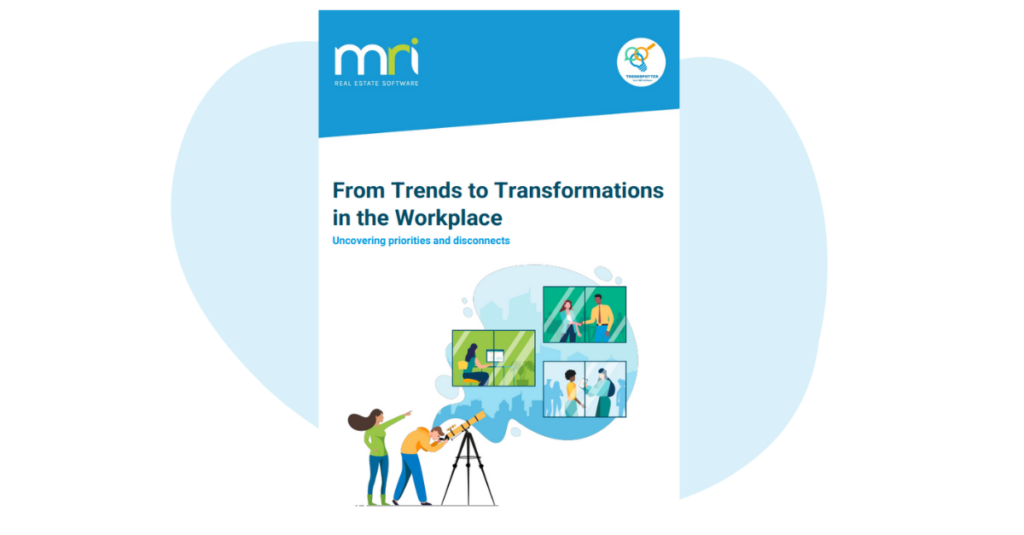A guide to facilities risk management: how to evaluate and manage common risks
Facilities risk management is an essential practice for maintaining safe, efficient, and compliant properties. From identifying potential hazards to implementing effective safety measures, understanding what is facilities management is key for real estate professionals seeking to protect their assets and ensure smooth operations.
As a leader in real estate solutions, MRI Software offers innovative facilities management software designed to help organisations streamline risk management processes, enhance safety, and meet regulatory standards. This guide will explore the fundamentals of facilities risk management, outlining practical strategies for evaluating, mitigating, and managing risks effectively.
Facilities Management software
Leading solutions for property occupiers, owners and service providers & contractors.

What is facilities risk management?
Facilities risk management involves identifying, analysing, and controlling potential hazards within a facility that could impact its functionality, safety, or compliance. This process ensures that risks are systematically identified and managed to maintain a safe environment for occupants and protect property value. Whether you’re managing a commercial office building or a residential complex, facilities risk management helps reduce the likelihood of accidents, damage, or financial loss.
The goals of effective facilities risk management
- Ensure safety: Protect the safety of all occupants, including staff, tenants, and visitors.
- Maintain compliance: Keep up with industry regulations, standards, and safety codes.
- Preserve property value: Safeguard the property’s physical integrity and operational efficiency.
- Minimise operational disruptions: Reduce the likelihood of costly breakdowns or repairs due to unforeseen hazards.
The importance of facility risk assessment
Conducting a risk assessment is essential for understanding the specific hazards associated with a facility. Without a proper risk assessment, facility managers may overlook critical issues that could lead to unexpected incidents. Risk assessment provides a proactive approach to managing risks by identifying potential threats before they escalate. By addressing risks early, you can minimise the likelihood of costly repairs, improve safety standards, and ensure compliance with regulatory requirements.
Key components of facilities risk management
An effective risk management strategy involves several key components. Each plays an integral role in identifying, analysing, and mitigating risks within your facility.
Risk identification
The first step in risk management is identifying potential risks. These could range from structural hazards, such as weak foundations or old wiring, to environmental risks like water damage or fire hazards. A thorough understanding of the facility’s layout, usage patterns, and operational requirements helps pinpoint areas where risks are likely to occur.
Risk analysis
After identifying risks, it’s essential to analyse their potential impact. Risk analysis evaluates the likelihood and severity of each identified risk. This stage allows you to prioritise risks based on their potential consequences, ensuring that the most pressing issues receive attention first.
Risk mitigation
Risk mitigation involves implementing measures to reduce the likelihood or impact of identified risks. This could mean installing fire suppression systems, updating electrical wiring, or conducting regular equipment maintenance. Effective mitigation strategies help manage risks without significant interruptions to operations.
Continuous monitoring and review
Risks within a facility can evolve over time, making continuous monitoring crucial. Regular inspections, audits, and updates to risk management strategies ensure that your facility remains compliant and safe as needs change. Keeping an eye on potential risk areas and adjusting strategies as needed allows for effective, ongoing management.
Conducting a facility-based risk assessment: Step-by-step guide
Conducting a facility-based risk assessment allows you to systematically evaluate each area of a facility for potential hazards. Here’s a step-by-step approach:
- Identify facility areas for assessment: Begin by dividing the facility into key areas, such as common spaces, equipment rooms, and storage areas.
- List potential hazards in each area: For each area, note any hazards, from slippery surfaces to fire risks or electrical issues.
- Evaluate hazard severity and likelihood: Assess how likely each hazard is to occur and the severity of its impact.
- Determine risk control measures: Decide on control measures, such as signage, protective equipment, or regular maintenance checks.
- Document findings and actions taken: Keep a record of identified risks and steps taken to manage them, ensuring accountability.
Creating a facility risk management plan
A well-crafted facility risk management plan outlines strategies for identifying and managing risks over time. This plan should be tailored to the specific needs of your facility and include processes for regular risk assessments, updates, and audits.
- Define roles and responsibilities: Designate who will handle various aspects of risk management within your team.
- Establish regular risk assessment schedules: Determine how often assessments will occur, based on facility needs.
- Set reporting protocols: Outline how incidents, potential risks, or assessment results should be reported and to whom.
- Develop emergency procedures: In case of an emergency, ensure that there are clear, documented procedures to protect occupants and mitigate damage.
Facility risk assessment checklist
A structured checklist can help you manage risk assessments efficiently. Use this list as a quick reference during routine inspections.
- Inspect fire safety equipment and ensure compliance with safety codes.
- Examine structural elements, such as walls, roofs, and foundations, for visible wear or damage.
- Test all electrical systems for signs of wear, exposed wiring, or malfunction.
- Check HVAC systems for maintenance needs, including filter replacements or cleaning.
- Verify that exits and evacuation routes are clear and adequately marked.
- Ensure that emergency contact information is displayed and accessible.
Ongoing risk management: the facility risk management checklist
Maintaining a safe facility is an ongoing process. Regular use of a management checklist can ensure that critical risk areas are routinely monitored.
- Conduct monthly safety audits, focusing on high-risk areas.
- Schedule regular inspections of all equipment, particularly those critical to facility operations.
- Document all incidents and near-misses, including follow-up actions.
- Review and update emergency plans and contact lists quarterly.
- Arrange training for staff to ensure they’re aware of facility risks and emergency procedures.
Contact MRI Software
Want to find out more about how our software can help you with facilities management? Contact MRI Software today on 1300 657 700.
From Trends to Transformations in the Workplace – Uncovering Priorities and Disconnects
In partnership with CoreNet Global, MRI Software conducted a survey of real estate professionals around the world to examine emerging trends in office transformations. These insights provide a global perspective, with input from the APAC, EMEA, North…

